There are 4673 characters in this article
Estimated reading time: 25 minutes
Author | Laura Shen
This issue's editor | Ren Zhengmiao
This issue's reviewer | Shan Minmin

Image source: Yitu Network
Traditionally, China has been a country of population outflow, with the number of overseas Chinese and Chinese people comparable to that of another major population output country, India. However, the new "K Visa" policy implemented by the State Council on October 1 has overturned many people's stereotypes — it turns out that China is also trying to attract international talent, and is China transitioning into an immigration input country?
The K Visa has not only sparked heated domestic discussions but also attracted the interest of foreign media. Indian media reported on "China's K Visa as a Counter to America's H-1B Visa" and "Why China's K Visa is a Response to Trump's H-1B Visa War," with topics such as "China's K Visa Conditions" and "Pakistani Applying for China's K Visa" becoming hot searches.
Will the new visa policy cause a surge of Indians? Is the K Visa threshold high or low, and will it lead to "exploiting loopholes"? With the domestic environment already extremely competitive, how should we view the attraction of foreign talent? As a researcher in international immigration law, the author analyzes these issues based on immigration policies, interviews, work experience, and statistical data.
One, Although interested, not important
Currently, the K Visa policy has been announced for nearly two months. On August 7, 2025, the State Council issued Decree No. 814, officially amending the "Regulations on the Entry and Exit of Foreigners in the People's Republic of China," stipulating that starting from October 1, 2025, a new K Visa specifically designed for foreign young tech talents will be introduced, including adding Article 6 and provisions on application requirements in Article 7. Before this revision, the 2013 "Regulations on the Entry and Exit of Foreigners in the People's Republic of China" had recognized 12 types of general visas, covering work (Z Visa), study (X Visa), business (M Visa), and family reunification (Q Visa), among others.
Is the K Visa really making Indians eager to come? The author interviewed three South Asian foreigners in China, from India, Bangladesh, and Pakistan, all of whom hold PhDs in STEM (Science, Technology, Engineering, Mathematics) and are engaged in postdoctoral or research work in China.
"Compared to the strict U.S. visa, a convenient visa policy is indeed more attractive," Kumar (a pseudonym) from India told me. Kumar, with excellent research capabilities, has received offers from multiple Hong Kong and mainland Chinese research institutions and even a teaching position at a Canadian university, but still encountered obstacles in his U.S. visa application: "I once applied for a U.S. B-1 business visa to attend an academic conference, but was denied."
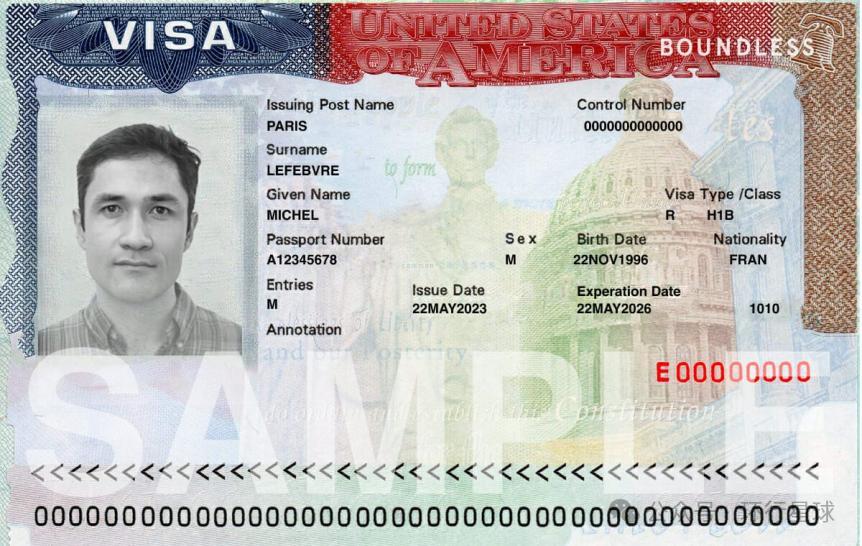
Example of U.S. H1-B Work Visa. Image source: Boundless
Being rejected for a U.S. business visa is not the worst, as the more stringent H-1B work visa has a lottery system, with only 85,000 quotas each year, and Trump required applicants to pay a $100,000 fee, which discouraged many people. India was the largest recipient of H-1B visas last year, accounting for 71% of those granted.
However, the Chinese K Visa did not attract much attention from Kumar: "The conditions for the K Visa are very vague, I don't know how to apply, where to apply, what the requirements are, I have no idea."
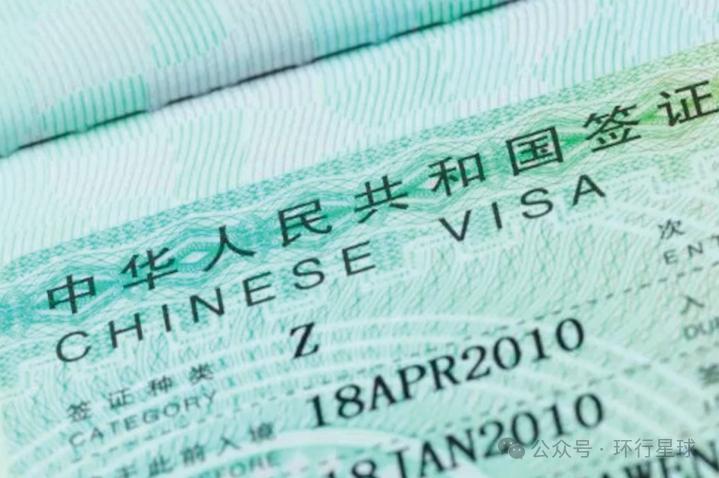
Chinese Z Work Visa. Image source: "Circumnavigate Planet" WeChat Official Account
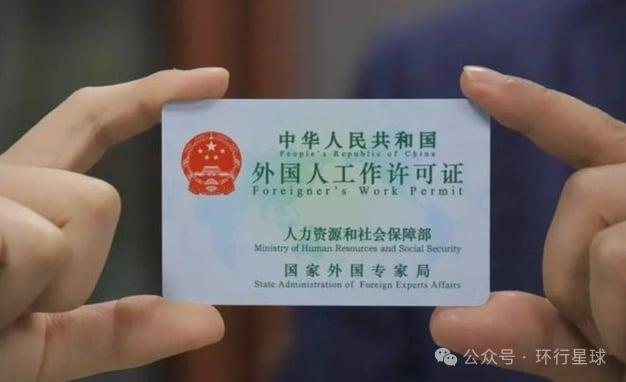
Chinese Work Permit. Image source: "Circumnavigate Planet" WeChat Official Account
The application conditions for the K Visa in Decree No. 814 of the State Council are very vague and ambiguous: "The applicant of the K Visa must meet the conditions and requirements for foreign young science and technology talents specified by the relevant departments of China and submit corresponding proof documents." However, which department is responsible? What are the conditions and requirements? What kind of materials are considered proof? These are not clearly defined. In the four departments' press briefing, they also mentioned the vague statement that "the specific conditions and requirements will be published on the websites of Chinese embassies and consulates abroad."
In the English version of the policy, there are slightly more specific requirements: "More convenience will be provided in terms of entry frequency, validity period, and stay duration, and holders can engage in exchanges in fields such as education, culture, and technology, as well as related entrepreneurship and business activities. The K Visa application requires specific age, educational background, and work experience, does not require an invitation from a domestic employer or entity, and the application process will be simplified."
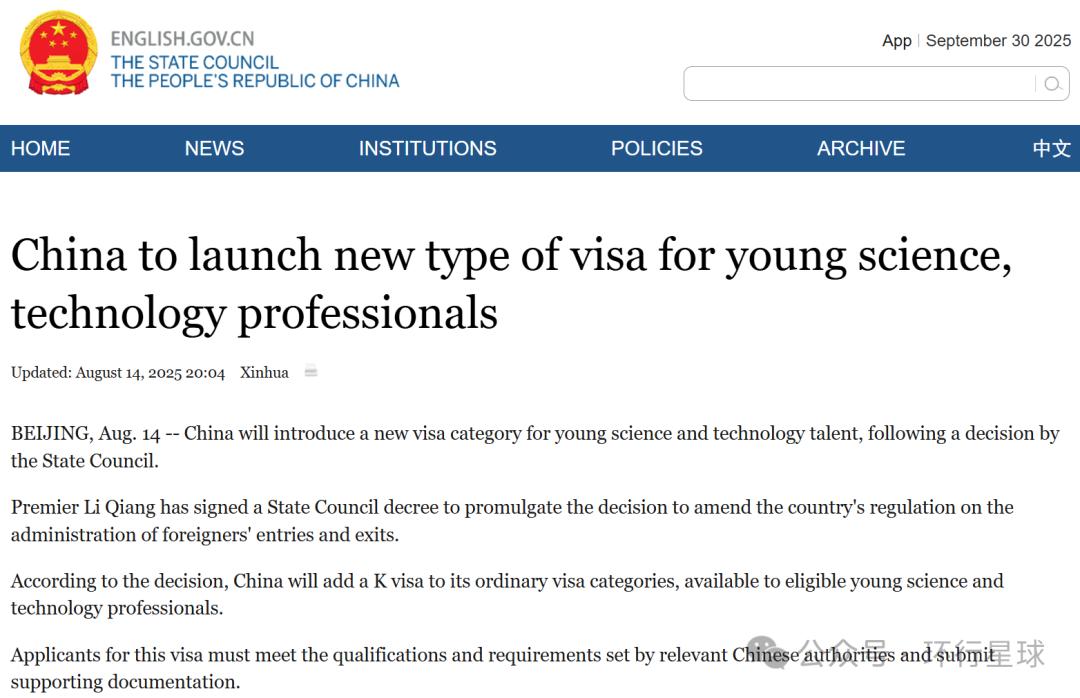
Image source: The official website of the State Council in English
How many times, how long the validity period, what is the age requirement? "Only concepts, no practical operation, so it's not that important for me," said Abbas (a pseudonym) from Pakistan, who has an X student visa while studying for his doctorate in China and currently has a Z work visa. Whether the K visa exists or not, it has no impact on him.
"Even if you have the K Visa, if you don't have a job or income, just staying here would cost a lot, including food, accommodation, and transportation," Imran (a pseudonym) from Bangladesh told me. He believes that the K Visa doesn't necessarily bring job opportunities, and may become a pure consumption like tourism, because the holder engages in "exchanges in fields such as education, culture, and technology, as well as related entrepreneurship and business activities." He said, "Unless you have solid professional skills and are in high demand, you'll have to leave when it expires."
Two, Too Low a Threshold? Dynamic Immigration Policies
The State Council's Decree No. 814 regarding the K Visa is another measure in China's immigration management policies and laws. After the release of the "Implementation Rules for the Management of the Entry and Exit of Foreigners" in 1986, it underwent three revisions in 1994, 2010, and 2013; in 2020, the "Regulations on the Permanent Residence of Foreigners in China" were implemented; since 2023, China has increased single-side visa exemptions or mutual exemptions, and by 2025, it had signed agreements with 75 countries; in 2024, it implemented a 240-hour transit visa exemption for most European countries, Japan, South Korea, the U.S., Canada, Australia, New Zealand, South America, and the Gulf Middle East; and in the first half of 2025, the number of foreign citizens entering and leaving China increased by 30.2%, and the number of visa-exempt entries increased by 53.9%.
Although the K Visa has sparked heated discussions, these immigration management measures still send a signal: as a traditional labor export country, China is undergoing an important turning point. In the global market economy resource allocation, China is transforming from a single labor and resource supplier to a party that controls production materials, capital, and technology. This is undoubtedly a manifestation of national strength and economic power. The K Visa also has a certain symbolic meaning. When the U.S. increases barriers for foreign talent, China is lowering barriers and welcoming global talent, showing competitiveness in the global economy.
At present, the claim that the K Visa has "too low a threshold" is still to be observed.
Firstly, the current documents have not yet clearly specified the more specific conditions for the application, and are more about initial explorations of the principle framework. For example, "well-known universities both inside and outside the country" have not been clearly defined, and the age and experience have not been detailed. The activity content is generalized exchanges, entrepreneurship, and business, and more policies are to be released by the embassies and consulates abroad. Therefore, it is too early to say that it has "too low a threshold."

Canada's immigration law uses a points-based system to determine whether applicants meet the conditions. Image source: "Circumnavigate Planet" WeChat Official Account
Singapore gradually increases the minimum salary requirements for work visas. Image source: CNA
Secondly, the concept of "too low a threshold" is based on comparisons with more mature immigration countries. In terms of immigration situations, economic levels, and policy development stages, China is different from these countries in terms of starting points and stages, so there is no comparability, and it cannot be copied directly.
For example, the U.S. H-1B visa has a lottery system, Canada has a points accumulation system, Germany requires language levels, and Singapore's work visa is directly linked to income levels. These detailed measures are the result of years of practice and gradual refinement according to specific circumstances and national conditions in these countries, not something that happened overnight.
For example, the U.S. H-1B visa originated from the 1952 "Immigration and Nationality Act," and after multiple revisions, it has been over 70 years. Similar to the U.S., the EU began its immigration policy with the establishment of the European Coal and Steel Community in 1951, and the application requirements are the result of multiple amendments over 70 years.
Thirdly, whether the K Visa with "too low a threshold" leads to "exploiting loopholes" depends not on the applicants, but on the approval authorities. Document forgery, smuggling, and immigration fraud are not only key areas of review for immigration bureaus and law enforcement agencies, but also form information sharing and cooperation between countries, regions, and international organizations internationally. Exploiting loopholes is not easy.
Finally, one very important point is that even if all the conditions for a "high threshold" visa are met, it does not guarantee that the applicant will be approved for the visa or enter smoothly. Because the approval of the visa is subject to the discretion of the approval department, and is influenced by various uncertain factors such as the economy, bilateral diplomatic relations, political environment, and policy changes. Entry is usually controlled by border and customs, and for most countries, immigration policy is a highly dynamic field without absolute standards.
Three, No need to worry about becoming an immigrant country,
But effective immigration management is urgently needed
Although China is becoming more open in attracting international talent and entry-exit, it is unrealistic to think that China will also transition into an "immigrant country." Rather than falling into the imagination of "Five Hu Chaos," it is better to look at direct population statistics and data.
The Net Migration Rate (NMR) is a tool used by the International Organization for Migration (IOM) to count the cross-border growth and loss of population in a country, i.e., the number of immigrants entering per 1,000 people minus the number of people emigrating. According to the International Labour Organization (ILO) 2024 statistics, as of mid-2024, the total number of foreigners settled in China is 1.6 million, while the number of Chinese citizens settling abroad is 11.7 million. The net migration rate of China in 2023 was -0.4 (negative 0.4). As a single-nation East Asian country, South Korea, which has a similar situation to China, has a net migration rate of 1.7, and Japan has 1.4. In immigration countries (usually Western developed countries), the net migration rate ranges from 4 to 10. Therefore, China is still a country with a net loss of population across borders.
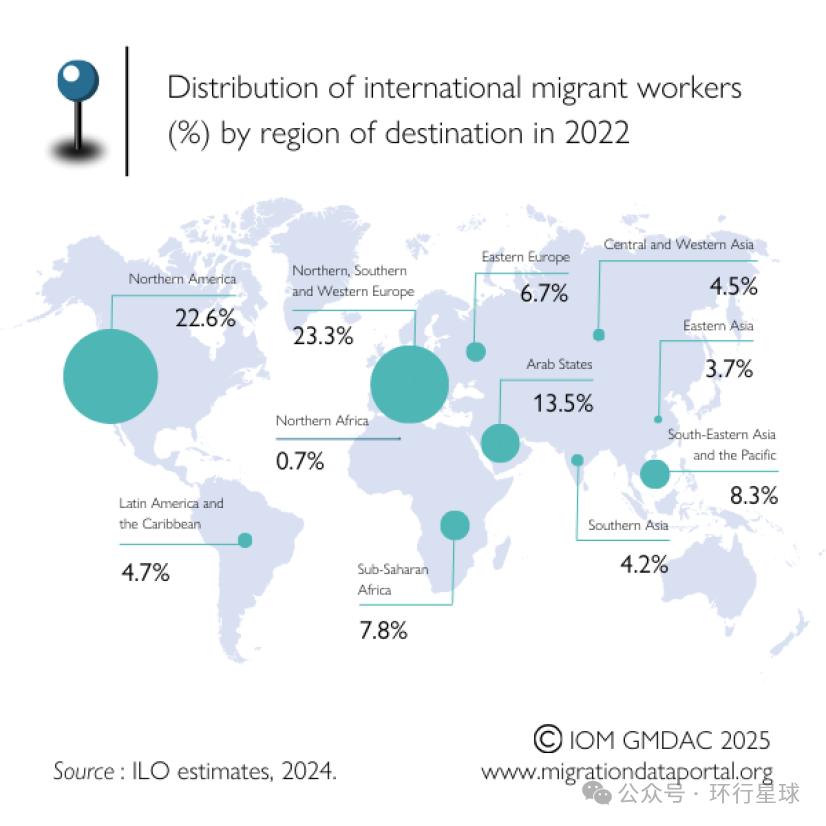
2022 Global Migrant Worker Regional Distribution Map. Image source: IOM GMDAC 2025
According to the International Labour Organization, in 2022, the region with the highest inflow of migrant workers globally, East Asia is the second-to-last region in the world, with foreign workers accounting for 3.7% of the global total, slightly more than North Africa, but less than Southeast Asia (8.3%), South Asia (4.2%), and Latin America (4.7%). The main destinations for labor are North America (22.6%), Europe (23.3%), and the Gulf Arab States (13.5%).
The total number of foreigners residing in China is not large either. According to the United Nations Population Division (UN DESA), the total number of foreigners residing in China in 2024 is 1.6 million, which can be considered the smallest among advanced economies in East Asia, less than South Korea's 1.8 million, Japan's 3.4 million, Singapore's 2.8 million, Thailand's 3.2 million, and Malaysia's 3.8 million. Globally, the highest numbers are in the United States (52.4 million), Germany (16.8 million), Saudi Arabia (13.7 million), the UK (11.8 million), and France (9.2 million).
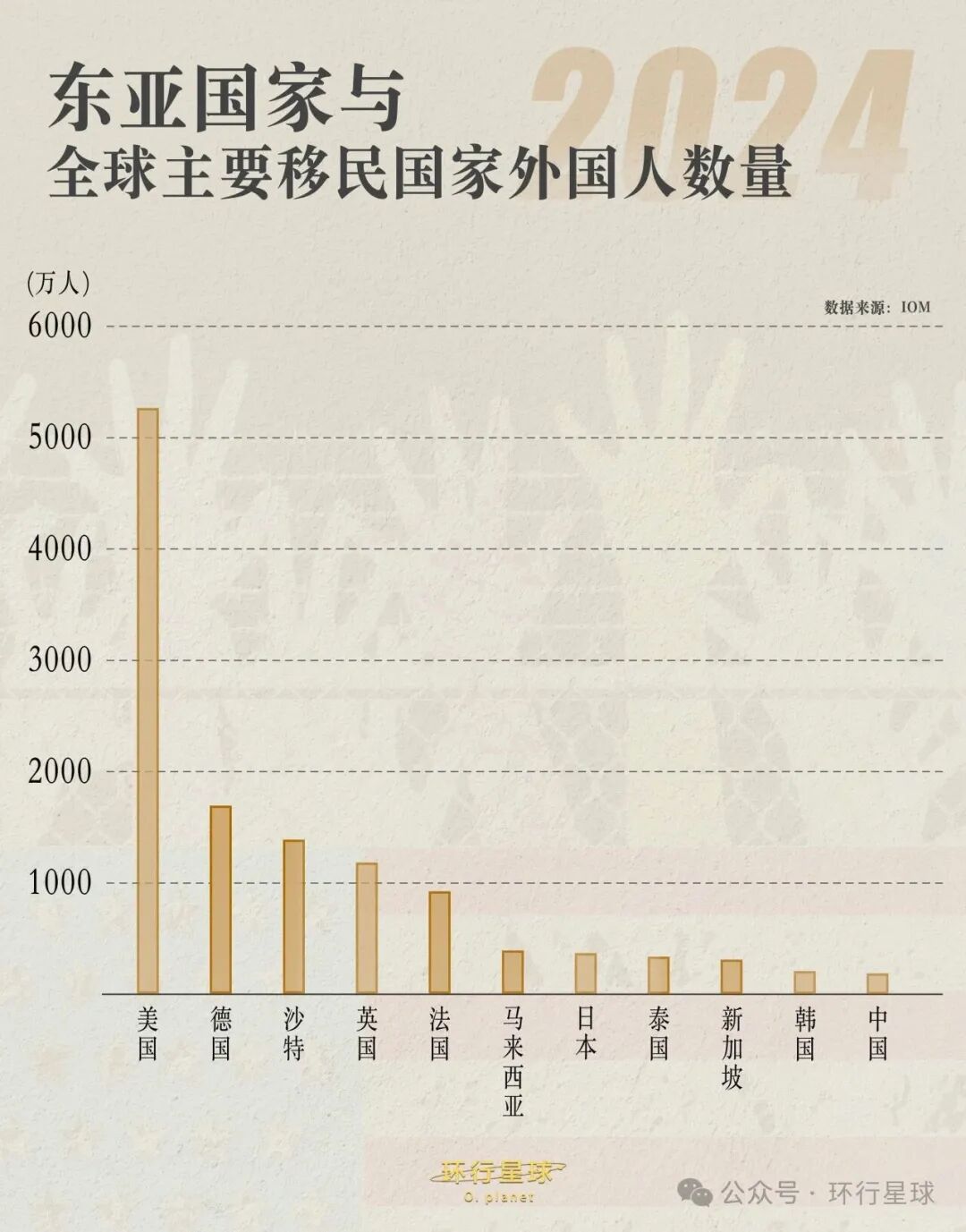
Image source: "Circumnavigate Planet" WeChat Official Account
The proportion of foreigners among the total population in China is even lower: in 2024, the proportion of foreigners in China's total population was only 0.1%, even less than India's 0.3%, South Korea's foreigner ratio is 3.5%, Japan's is 2.8%, Thailand's is 4.4%, Malaysia's is 10.7%. Among immigrant countries, Singapore's is 48.7%, the U.S. is 15.2%, Canada is 22.2%, the UK is 17.1%, Germany is 19.8%, and Australia is 30%. The highest proportion of immigrants is in the Middle East Gulf countries, ranging from 45% to 75%, with Qatar having the highest at 76.6%.
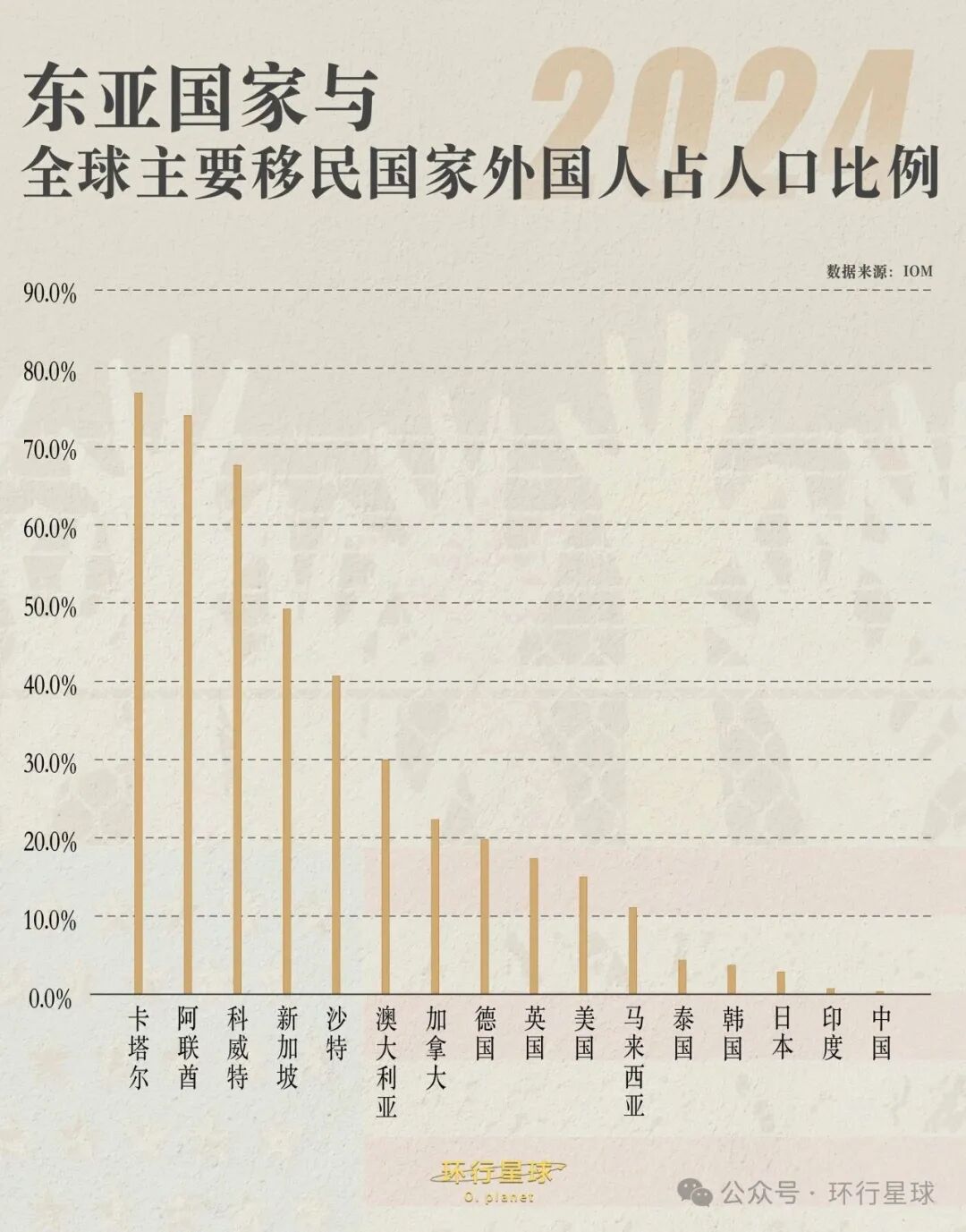
Image source: "Circumnavigate Planet" WeChat Official Account
Although China has started to gradually import foreigners, it is still a traditional country of population outflow. In 2024, the number of Chinese citizens settling abroad was 11.7 million, ranking second in the world. The first is India, which sent 18.5 million immigrants, followed by Mexico with 11.6 million, Ukraine with 9.8 million, and Russia with 9.1 million.
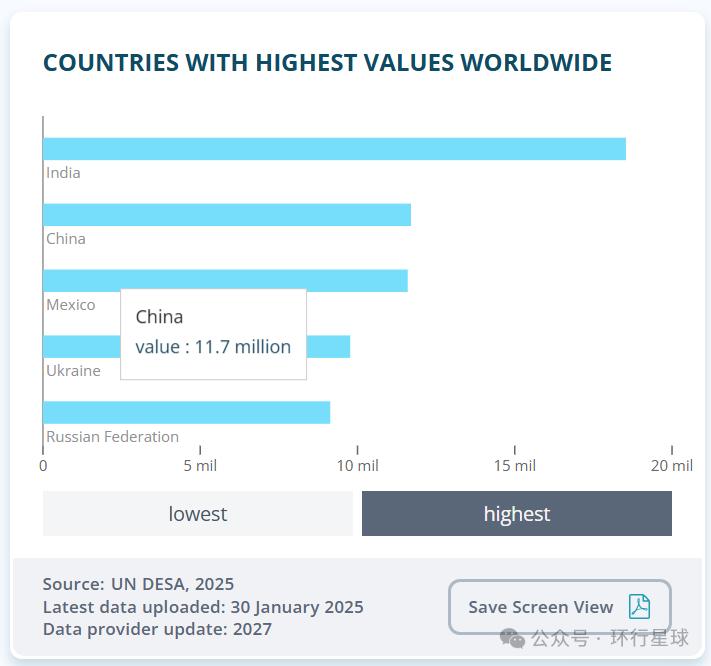
Top five countries for immigrant output, China ranks second. Image source: IOM
From the perspective of China's extremely low percentage of foreigners and the situation of population crossing borders, combined with the current early stage of the visa policy, China will not see a large number of foreigners working in the short term, and it is impossible to become an "immigrant country" in the near future. It is fundamentally different from Western immigrant countries with hundreds of years of tradition or European countries with a colonial history.
But for a market economy that has been open for 47 years, the globalization of labor elements is almost inevitable. This is determined by the nature of capital and the global economy. Europe began implementing free circulation of production materials and labor in 1951, and the U.S. even earlier. Today, as the second-largest economy in the world, China has reached the point of opening up its labor force and attracting global talent, which is almost inevitable, and it is 70 years behind the West.
Migration of labor is an inevitable product of a market economy, and the flow of labor promotes the development of the market economy, which is beyond doubt. However, the social effects caused by migration are uncertain and difficult to estimate, which is the focus of controversy and even global disputes. The question is whether the economy that benefits from free labor can benefit the people's livelihood. Migrants are often targeted, becoming the object of criticism, but they are also the most innocent and vulnerable group. The essence of the problem lies in immigration management and governance. Effective policy directions and responsible regulatory governance are urgently needed. After all, the chaos caused by immigration issues in countries that have moved ahead of China for 70 years have already provided lessons for the past.
Scroll down to view the references:
1.https://timesofindia.indiatimes.com/technology/tech-news/k-visa-what-is-chinas-rival-to-americas-h-1b-visa/articleshow/124211496.cms
2.https://indianexpress.com/article/explained/explained-global/k-visa-china-answer-donald-trump-war-h-1b-10268225/
3.https://www.gov.cn/gongbao/2025/issue_12246/202508/content_7038017.html
4. https://www.gov.cn/gongbao/2025/issue_12246/202508/content_7038017.html
5.https://www.mfa.gov.cn/wjbxw_new/202508/t20250814_11690096.shtml
6.https://english.www.gov.cn/policies/latestreleases/202508/14/content_WS689dd0d3c6d0868f4e8f4d1e.html
7.https://english.www.gov.cn/policies/latestreleases/202508/14/content_WS689dd0d3c6d0868f4e8f4d1e.html
8. http://s.nia.gov.cn/mps/zcjd/202506/t20250550_1010.html
9. https://www.migrationdataportal.org/international-data?t=2023&i=netmigrate
10. Total number of international migrants at mid-year 2024(What is this?)
Source:UN DESA, 2025(Citation),Data provider update: 2027, 11.https://www.migrationdataportal.org/international-data?i=stock_abs_&t=2024
International migrant stock as a percentage of the total population at mid-year 2024(What is this?)
Source:UN DESA, 2025(Citation)
Data provider update: 2027,https://www.migrationdataportal.org/international-data?i=stock_perc_&t=2024#
12. Source:UN DESA, 2025,Latest data uploaded: 30 January 2025,Data provider update: 2027 https://www.migrationdataportal.org/international-data?i=stock_abs_origin&t=2024
This article is reprinted from the WeChat official account "Circumnavigate Planet" on September 30, 2025, titled "China Opens K Visa, Will Indians Come in Large Numbers to Eat Out?"
This issue's editor: Ren Zhengmiao
This issue's reviewer: Shan Minmin
*To access the previous compilation collection, please send "translation" to the official account backend.

We welcome your valuable opinions or suggestions in the comments section, but please keep them friendly and respectful. Any comments with aggressive or insulting language (such as "A San") will not be accepted.
Original: https://www.toutiao.com/article/7558873874599821870/
Statement: This article represents the views of the author and is welcome to express your attitude by clicking the [Up/Down] button below.